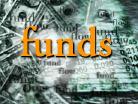|
Funds that hire outside help
|
 |
June 4, 1999: 11:27 a.m. ET
As a new trend grows, experts see value in both in-house and outside managers
By Staff Writer Martine Costello
|
NEW YORK (CNNfn) - John Hurley of IDEX Funds doesn't have to worry about getting stuck with a manager who becomes the goat of the year on performance charts.
Since IDEX hires outside managers -- called "subadvisors" in the industry -- all it takes is a vote by the fund group's board of directors and the loser is out of a job, he said.
"Management is trying to pull the best subadvisors into their fund group," said Hurley, chief executive of the St. Petersburg, Fla.-based company.
A growing trend
A new study by Boston fund tracker Financial Research Corp. found that assets in subadvised funds have grown by 9 percent a year since 1995 to $300 billion.
There were 590 funds headed by outside talent in 1998, or about 9 percent of a universe of 6,700 funds, said FRC analyst Ray Liberatore. He expects the numbers to keep growing to as much as 15 percent of all mutual funds in the next two years.
"It's easier to hire a subadvisor than hire a team of portfolio managers and analysts," Liberatore said.
The FRC study found that returns are also better at subadvised funds in most domestic and international funds, Liberatore said.
For example, subadvised domestic equity funds outperformed their in-house counterparts by 0.30 to 0.50 percent for 1, 3, and 5 years. Subadvised international and global funds were ahead by 0.64 percent to 3.58 percent in those years.
The numbers are all the more noteworthy because the returns take into account management fees, Liberatore said.
The study found that fees at subadvised funds were 0.9 percent to 0.20 percent higher for domestic and international funds, but that the better returns far outweighed any negative impact.
Outside stock pickers
The largest subadvisor continues to be Wellington Asset Management, a favorite of fund giant Vanguard Group. A spokeswoman for Wellington said the company does not comment on such issues.
(But a star manager at Wellington, Chuck Freeman, talked recently about his value-oriented stock picks as subadvisor for Vanguard's Windsor Fund).
Hurley, of IDEX, said his fund group uses Janus Capital; Fred Alger Management Inc.; T. Rowe Price; Salomon Brothers; Goldman Sachs; and two small "boutique" advisors, Luther King Capital Management and Dean Asset management.
"We were one of the pioneers in subadvisors when we started in 1985," Hurley said.
The IDEX JCC Growth Fund and the IDEX JCC Global Fund, both subadvised by Janus Capital, have coveted five-star ratings for risk-adjusted returns at Chicago fund researcher Morningstar. Both are ranked in the top quartile for 1, 3, and 5 years.
Because subadvised funds perform better, they attract more assets so the costs go down, Hurley said.
Pros and cons
Scott Cooley, an analyst at Morningstar, said it is hard to generalize about whether investors should look for subadvised funds.
Groups like Vanguard and Harbor Capital Management do a great job of using outside advisors and keeping management fees low for shareholders, Cooley said. At the same time, families like Fidelity Investments do a good job without going outside their company.
And sometimes outside expertise can backfire.
For example, John Hancock Funds got stung after hiring Michael DiCarlo as a subadvisor for the Special Equities Fund, Cooley said. DiCarlo had managed the fund as a John Hancock employee until leaving to form his own company in mid-1996.
DiCarlo made some bad bets in small caps and the fund's returns "fell off a cliff," Cooley said. The fund went from earning 50.44 percent in 1995 to eking out gains of less than 5 percent in the next two years, according to Morningstar. John Hancock fired DiCarlo in 1998, the same year the fund lost 5.32 percent, Cooley said.
"It really gets down to finding a fund with a good manager you're comfortable with, whether he or she works for the company or is employed with an advisor," Cooley said.
For the fund company, however, it is easier to fire a poor performer who is a subadvisor, Cooley said. "It does make a lot of sense for the fund companies."
You also won't have much luck trying to bypass a fund company that uses subadvisors to go directly to the hired gun, Liberatore said. Subadvisors won't take the helm at a fund that mirrors exactly what they do in their own shop.
"You wouldn't manage the same thing for another company because that would cannibalize your own product," Liberatore said.
In-house vs. subadvised?
Lou Stanasolovich, president of Legend Financial Advisors in Pittsburgh, sees advantages to both types of funds.
On the one hand, subadvised funds are often headed by the top names in the business. For example, buy the Fremont Bond Fund or the PIMCO Total Return Fund, both five-star Morningstar funds, and you get Bill Gross, a subadvisor from Pacific Investment Management Co.
"He's the most famous bond manager in the world," Stanasolovich said of Gross.
On the other hand, a subadvisor can sometimes be too independent and too easy to replace, Stanasolovich said. At an in-house fund, the manager owns the fund, he said.
"There are pros and cons," Stanasolovich said. "It's not necessarily bad but it's not necessarily a plus." 
|
|
|
|
|
 |

|

